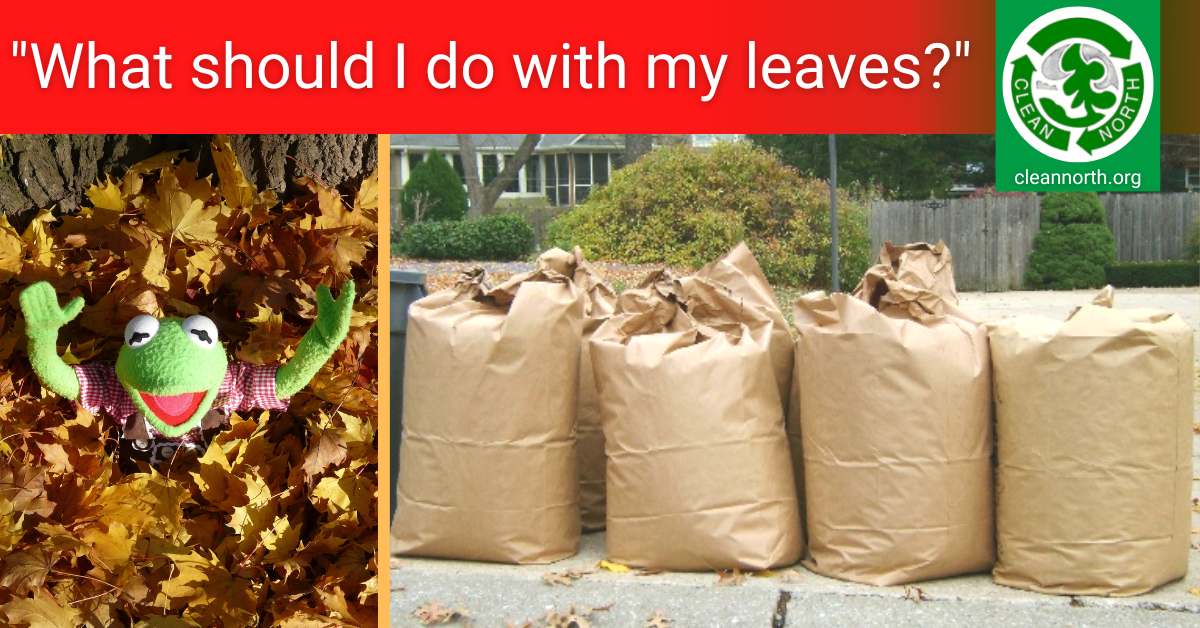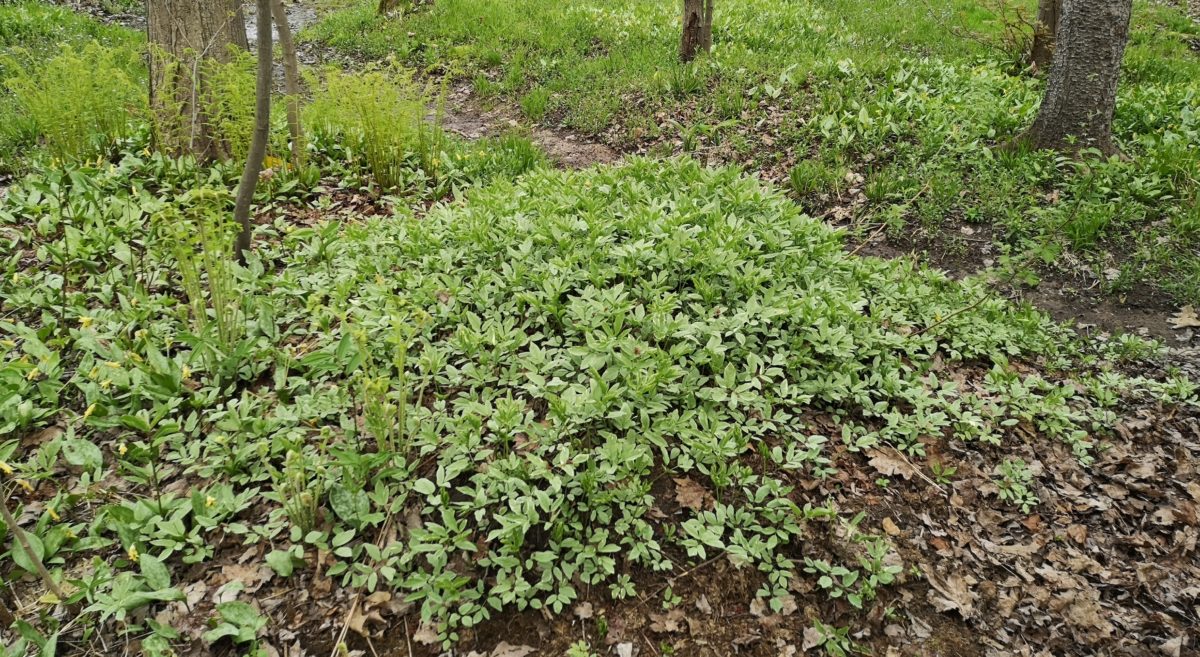
Want to get rid of your leaves, grass clippings, or other plant material RIGHT NOW? We’ve got answers, including where to take yard waste, where not to dump it, and how you can use it at home. If you are a resident of Sault Ste. Marie, the city offers two options for soft yard waste (grass clippings, leaves, non-woody plant debris):
- Set it on your curb in paper bags for biweekly collection—access schedule here. No brush, branches, trees, or wood. Material from invasive plants should be sealed in a heavy-duty trash bag and sent to the landfill.
- Transport it to the city landfill at 402 Fifth Line East during their regular business hours. No bags required and no drop-off charge. The yard waste bunker is near the Household Hazardous Waste Depot. Hard yard waste (brush, branches, trees, wood) goes to a different site in the landfill, and there is a charge for that.
More on the city landfill here.
An alternative to the landfill: Farmgate Farms just east of the Sault. They take spoiled fruit/vegetables, grass clippings, and leaves. For details, email Rita Collins at farmgateraw@gmail.com: Please no invasive plant material.
FYI: Lemieux Composting is now closed permanently as the owners have retired.
Don’t trash our natural areas
Please do not dispose of yard waste in nature, whether it’s an urban natural area, the bush, or a lake or river. Yard waste can cause massive ecological damage by spreading invasive species, smothering native plants, and overloading aquatic areas with nutrients (scroll to the bottom of this post for more info).
Ways to make use of yard waste at home
Grasscycling: Leave clippings on your lawn
Leaving grass clippings on your lawn, also known as grasscycling, comes with big benefits:
- Creates natural fertilizer: Grass clippings contain nutrients like nitrogen, phosphorus, and potassium. When left on the lawn, they act as a natural fertilizer and reduce the need for synthetic ones. Healthier grass, money saved.
- Retains moisture: Grass clippings act as a natural mulch, helping soil to stay moist. This can be especially helpful during hot and dry periods, as it reduces the need to water your lawn.
- Improves soil health: As grass clippings break down, they add organic matter to the soil, improving soil structure, promoting microbial activity, and and increasing nutrient-holding capacity.
- Saves time/energy: Leaving grass clippings on the lawn means no more bagging or raking, saving you time and effort.
- Reduces landfill costs: Grasscycling reduces the amount of organic waste sent to our landfill, which means lower costs for all of us.
Composting: Make your own high-value soil amendment
Composting turns yard waste into garden gold! Find a corner of your yard where you can create a compost pile to dump grass clippings, perennial plant material (except from invasive plants), and leaves—or use a compost bin to help material break down faster.
For faster composting, try to balance the carbon (brown materials like dry leaves) with nitrogen (green materials like grass clippings). If you don’t have enough brown material, you can add shredded boxboard or toilet paper rolls. (Tip: If you have a rodent problem, do not compost food waste like fruit peels and cores unless you have a rotating drum composter.)
Once the compost is finished (is dark brown and crumbly and smells like earth), apply it around trees and to your flower and veggie beds. More about composting on Clean North’s composting page
Shredding: Chop leaves into mulch with a string trimmer
Fill a large trash can halfway with dry leaves, put your string trimmer in the can, then turn it on. Raise the trimmer up and down several times to shred the leaves into small pieces for use as mulch in your yard.
You can also do this with dry stems of perennial plants from the previous season (but not woody stems from trees and shrubs). Be sure break the stems down into around 12-inch lengths before shredding.
Important: Wear a long-sleeved shirt, work gloves, and eye protection.
Re-purposing branches
Cut pruned branches into small pieces and scatter as mulch. Large branches can be cut into kindling and offered to a friend or neighbour with a camp.
The hazards of dumping yard waste

- Dumping yard waste is a key way invasive species spread. Invasive plants can outcompete native plants, disrupting the balance of nature. Once the native plants go, native pollinators, birds, and other wildlife may at risk.
- Dumped yard waste may contain chemicals like synthetic fertilizer and herbicides. These chemicals can wash into in the water we (and wildlife) drink and swim in.
- Piles of debris can change ecosystem structure, making it unsuitable for native plants and animals.
- When dumped into water bodies such as lakes, rivers, or streams, nutrient-rich yard waste can cause eutrophication—rapid growth of algae and aquatic plants. This overgrowth can reduce oxygen levels, killing fish and other aquatic critters.
- Dumped yard waste is ugly! It can reduce our enjoyment of activities such as hiking, cycling, and bird watching.
The last word
- Please help keep our natural areas (and us) safe by:
- Recycling yard waste OR
- Handing it over to the city
- Make sure any yard waste from invasive plants is:
- Sealed in a plastic bag
- Placed in the trash
Questions?
Email us at info@cleannorth.org.




